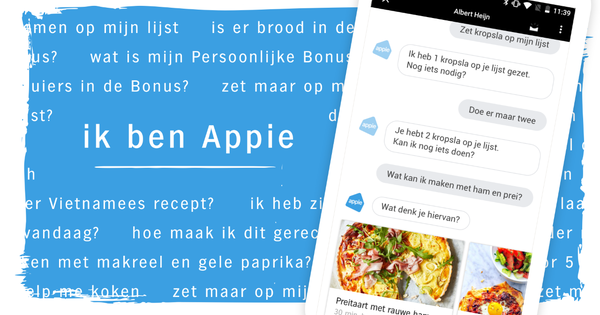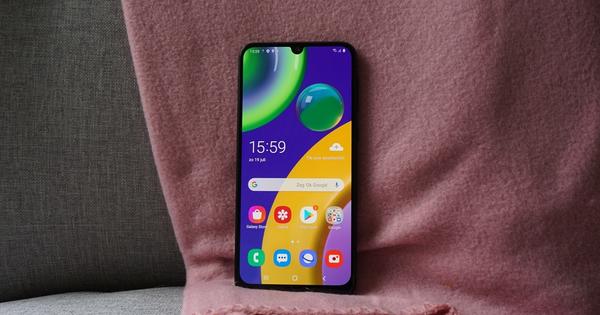Google Drive is useful as an external archive space or for sharing files. But like a physical storage space, it quickly becomes a mess. Does your Google Drive also look like an overflowing filing cabinet? Then work on the organization. With the tips in this article you can clean up your Google Drive so that you get an overview.
List view
You decide how you display folders and files in Google Drive: in list or grid view. If you go for the list view, you can set the line spacing. To do this, click on the gear where you want the setting Density finds. In this drop-down menu you set the density of the list lines to Compact, Ample or very spacious.
Many users focus on the center of the screen when they want to organize files in Google Drive. It is better that you follow the left navigation bar to organize your folders and that you reserve the center of the screen to view the contents of the selected folder.

Organize
Do you have many documents lying around in your Google Drive that are not neatly arranged in folders? Then you know something is wrong. That way you make it difficult for others - especially in an organization. So work with subfolders; that helps to divide your files into smaller specific groups. Always use a meaningful unique designation that is short and sweet so as not to cause confusion. And be consistent in the way you name folders and files.
If you can start a folder with a number or number, don't pass up the opportunity. This automatically visually organizes your folders. Be careful with spaces and punctuation marks. So do not use Photos from 2019 but 2019_Photos. You can use one folder for unsorted files, but avoid it as much as you can. Such a folder Miscellaneous quickly becomes the next junk cupboard.

Colors
In Google Drive, all folders are shown in gray by default, but you can add 24 colors to your folders. Right click on a folder in the sidebar or main window and use the command Change color. Then select the desired color. Since the folder names refer to the content, you can use the colors for another dimension. For example, you can leave folders or subfolders containing work that you have already finished gray. But you make folders in which you work green, for example. If you then want to quickly access your current affairs, select the green folders.
If you work with shared folders that are intended for different groups, you can create a yellow folder for team yellow and a red folder for team red. Or you give a color to your download folders or your personal folders. Maybe it makes sense that every project gets a different color?

With star
At the top left, Google Drive lists the categories: My Drive, Shared with me, Recent, and Starred. Star documents you use often. You do this by right-clicking on a document. With such a star you save searches again.
In addition, stars are useful to indicate which documents you still have to finish. Remove the star when the work is done. If you forget this, even the star file list can fill up quickly.

Free up Google Drive
Google was one of the pioneers of cloud storage services that crossed the threshold of 10 GB of free storage. Now every user has 15 GB of free storage. That sounds great, but anyone who uploads large video files, many high-resolution photos and bulky PDF files will notice that this quota is also finite. Google also has its own way of calculating the occupied storage capacity. That 15GB limit doesn't just apply to everything in your Drive, but also to all your messages and attachments in Gmail.
All the more reason to regularly clean your mailboxes and delete large attachments. You can view the details of your storage on Google's Drive storage website. However, the documents you create with Google Docs, Slides, and Sheets don't count toward your Google Drive storage. So you keep your Google Drive slim by working in Google's native format.
The way you use Google Photos is also important to stay within the 15GB limit. If you use Google Photos, you can save the photos to via the settings High Quality (2048 x 2048 pixels) instead of originall. This allows you to store unlimited photos. The same goes for videos if you allow Google to compress them to 1080p (full hd).

When you have an overview of the available space and the data you have stored, you can start cleaning. Select the section My Drive and switch to the list view. At the bottom left you can see how much storage space you are currently using. Because Google doesn't count the files that others share with you against your quota, it's best to ask which files are really your own. Therefore use the search function and click in the search box on the arrow that points down, so that you can find the box Owner the option Owned by me can select. Click on the blue button To search and you will get a list of custom files. Delete the documents you no longer need.
Since you are now in organization mode anyway, you immediately throw away the things you no longer use. When you delete a file from Google Drive, it moves to the trash. All files in the Trash will stay there and take up storage space until you empty the Trash.

If the document you are deleting is a file that someone else shares with you, the file will only be deleted for you. If it is a document that you share with others, those others will also lose access to the document if you delete it from yourself. Drive doesn't show a confirmation message when you delete files, but you do get the chance to undo a deletion with the button Undo.
Copy Shared Documents
View the category Shared with me. Also here can be a mess of files and folders. You can move such a shared file to any folder on Google Drive. To do this, use the right-click command Move to. But keep in mind that such a shared file always remains the property of the original owner. He or she can always delete it and then it disappears with you too. If it is a file that you really don't want to lose, you can make a copy of this file for safety's sake.
Such a copy is no longer associated with the user who originally shared it. So the new copy is all yours. To do this, right click on the shared file and choose the command Make a copy. That copy will appear on My Drive and not in the Shared with me category.

Convert PDF files
Do you have a lot of PDF files on your Google Drive? When it comes to bulky files, you can save space by converting them to the Google Docs format. After all, you know that these are not included in the calculation of your occupied storage space. You perform that conversion by right-clicking on the file, after which you run the command Open with chooses, followed by Google Docs. The result is a Google Doc with the exact same name as the PDF file.
Then you can delete the PDF file. Don't forget to empty the trash. You can also commit in Google Drive settings to convert all uploaded files to Google Docs format by default.

Symbolic Links
Finally, suppose you want to keep several copies of the same file in different folders on Google Drive. For example, you have shared several folders with other people and certain documents are intended for all teams. You want when someone changes something on one copy of this file, those changes are immediately applied to all copies. This is possible with a symbolic link. You actually make an alias of this file.
Select the file you want to make a symbolic link from and use the key combination Shift+Z. This will bring up a mini-menu in which you indicate in which folder the symbolic link should go. The Shift+Z shortcut works on Windows and macOS. You can apply the keyboard shortcut to both files and folders. When you delete the main file, the symbolic links will also disappear.


